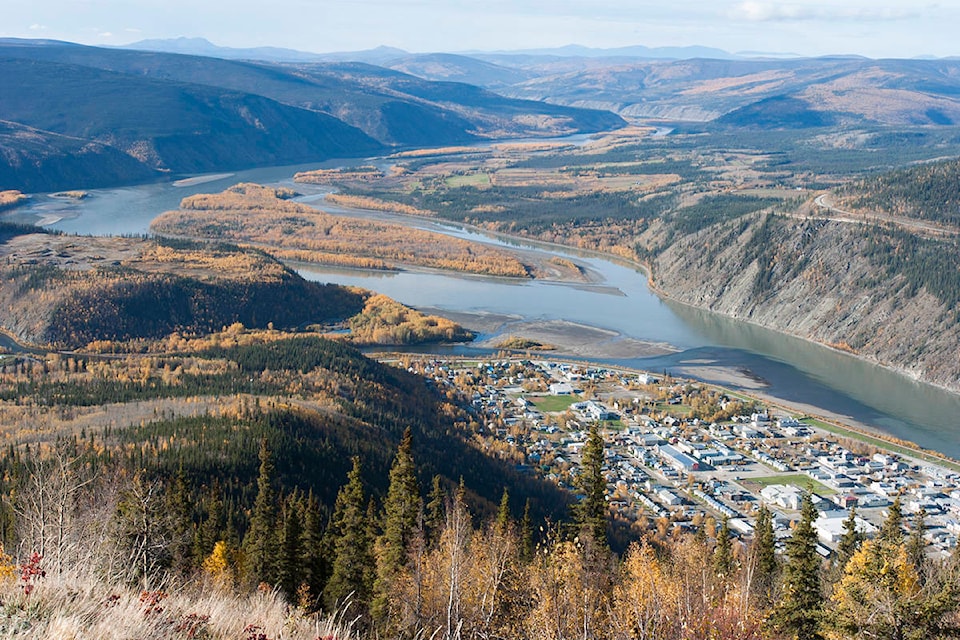On June 15, the Dawson Regional Land Use Planning Commission released its final draft plan.
Known as “On the Land We Walk Together/Nän käk ndä tr’ädäl,” the draft plan identifies areas where interim withdrawals are recommended to safeguard key conservation areas within the region during the planning process.
Sebastian Jones, the Fish, Wildlife and Habitat Analyst for the Yukon Conservation Society, said upon initial reading of the draft plan he was disappointed.
“The amount of land that is proposed to be permanently protected in a park like Tombstone is only 3.8 per cent of the planning region,” said Jones. “That’s way less than in the North Yukon or Peel Regional Land Use Plans.”
After digging further, however, Jones said there are aspects of the plan he likes.
“We are pleased the commission has set aside such a long period of time for engagement,” said Jones.
He said specific days during the engagement process have been set aside for looking into the creation of level two special management areas, another type of conservation area. In the areas new mineral claims can’t be staked but existing mineral properties can still be mined.
Jones added he’s hopeful the protections of areas designated Special Management Areas can be ramped up and permanently protected.
Thirty-nine per cent of the region is designated Special Management Area, where interim or permanent mineral withdrawal is recommended.
The draft plan showed innovation in regards to wetlands, said Jones.
“We don’t have a wetlands policy in the Yukon yet, it’s under development,” said Jones. “We don’t have a plan yet or guidelines from the Yukon Water Board for mining in underground wetlands yet, they are also under development.”
The commission had to find ways to navigate this and Jones said they came up with “fairly decent approaches” to wetlands.
“They’re suggesting bogs and swamps should be protected,” said Jones. “They’ve also taken a chunk in the working landscape in the middle of the gold fields and given it Special Management Area designation which is fairly bold.”
Fifty-five per cent of the region is designated Integrated Stewardship Area where industrial development is permitted under specific terms and conditions.
Jones said the language used, stewardship instead of management, is encouraging.
“That sends a really powerful signal that the commission expects everybody to act and think as if they have a stake in the landscape and in its health,” said Jones. “That’s a good thing.”
Jones said the draft plan is a good start but if the final plan looks as it does now, he will be disappointed.
“Nobody has the final plan looking like this,” said Jones.
The Commission will engage the public on the draft plan over the summer and early fall of 2021. Anyone with an interest in Yukon’s regional land use planning processes, or specifically in the Dawson region is encouraged to provide their comments and feedback during the engagement period.
On the same day the draft plan was released, the Yukon government temporarily withdrew mineral staking in areas designated High Conservation Value Areas.
On June 24, the Tr’ondëk Hwëch’in put out a press release saying they’re encouraged by the interim withdrawal.
This withdrawal “represents a significant step toward protecting essential values and promoting sustainable development within Tr’ondëk Hwëch’in Traditional Territory,” the release said.
The withdrawal is the result of many years of effort on behalf of the Tr’ondëk Hwëch’in, said Roberta Joseph, Tr’ondëk Hwëch’in Chief.
“This withdrawal facilitates the interim protection of significant environmental and cultural areas in our homeland,” said Joseph. “It is an important step in the recognition of our Final Agreement rights under Chapter 11 and a critical stage in the land use planning process.”
Contact John Tonin at john.tonin@yukon-news.com
